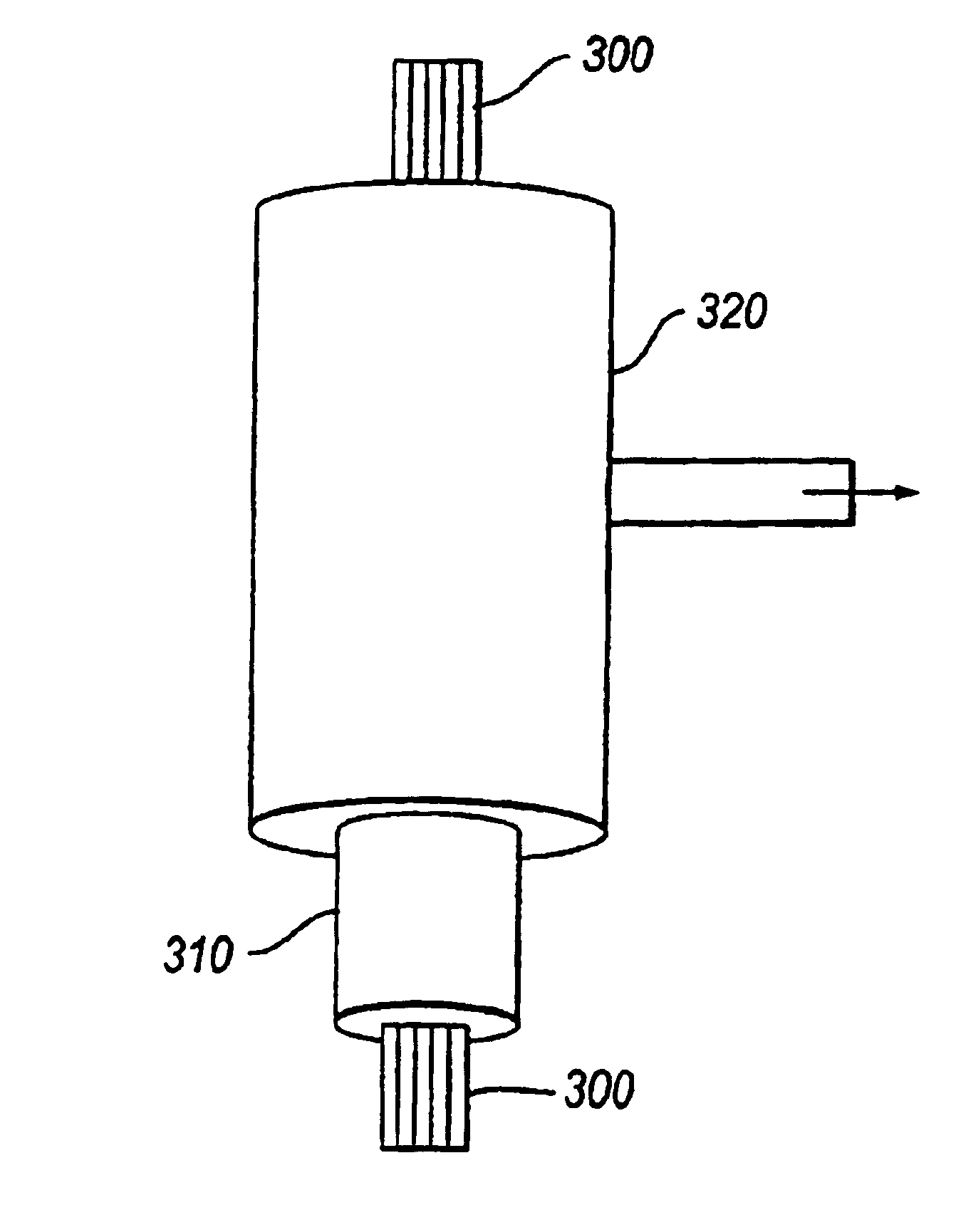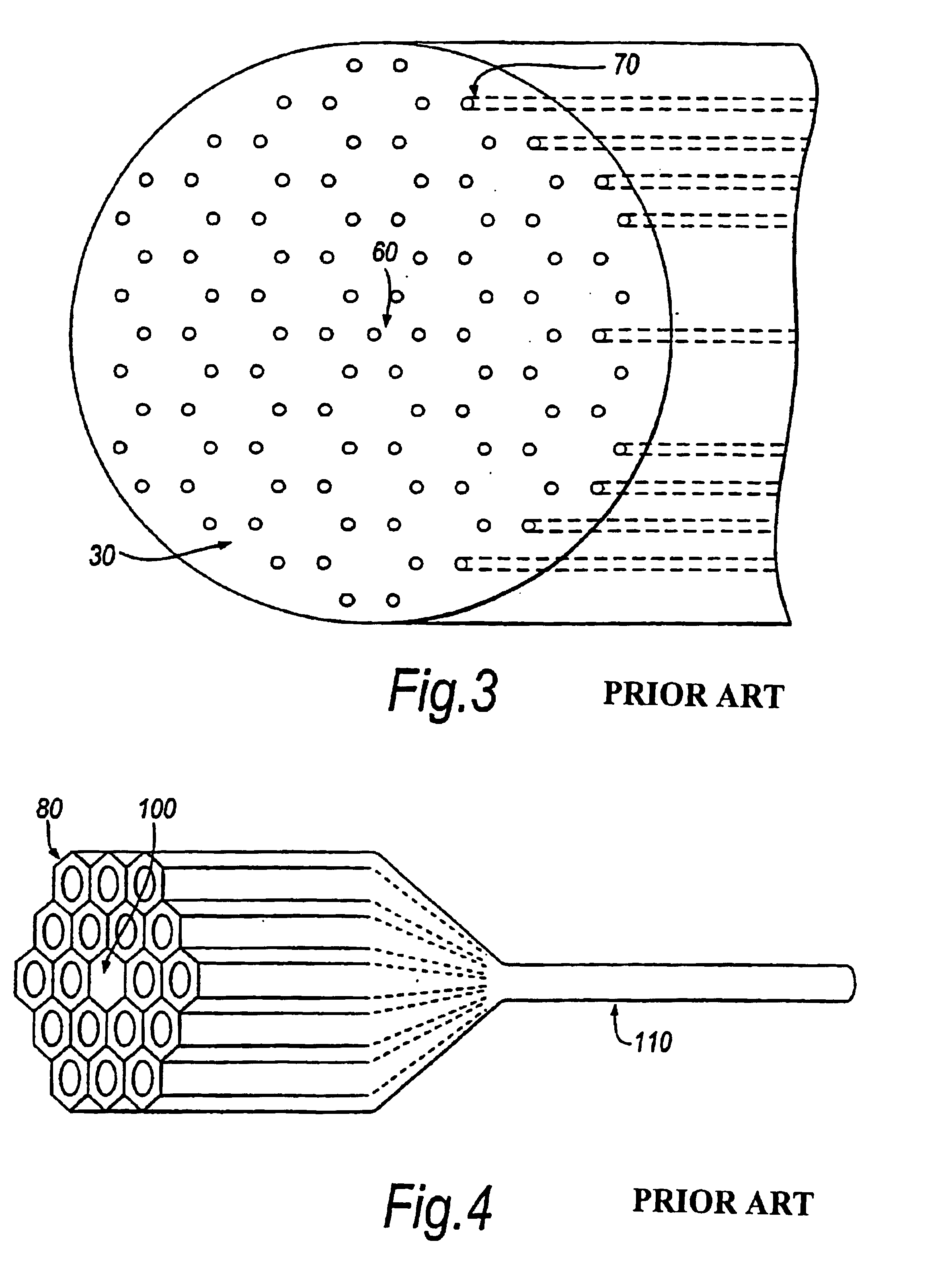Photonic crystal fibres
a technology crystal fibres, which is applied in the field of photonic crystal fibres, can solve the problems of inability to directly use photonic crystal fibres, the method of birefringence produced by standard fibres, and the inability to control the polarisation of propagating light in single-mode optical fibres. to achieve the effect of reducing the scal
- Summary
- Abstract
- Description
- Claims
- Application Information
AI Technical Summary
Benefits of technology
Problems solved by technology
Method used
Image
Examples
Embodiment Construction
[0071]Standard fibres, such as the example shown in FIG. 1, in their simplest form comprise essentially a cylindrical core 10 and concentric cylindrical cladding 20. Typically, both the core and the cladding will be made of the same material, usually silica, but each is doped with other materials in order to raise the refractive index of the core 10 and lower the refractive index of the cladding 20. Light, of appropriate wavelengths, is confined to the core 10, and guided therein, by total internal reflection at the core-cladding boundary 15.
[0072]A typical photonic crystal fibre, shown in FIG. 2, comprises a cylinder of transparent bulk material 30 (e.g. silica) with a lattice of cylindrical holes 40, which run along its length. The holes are arranged at the vertices and centres of regular hexagons, which have six-fold rotational symmetry. The holes have a regular period, broken by the omission of one hole near the centre of the fibre. The region 50 of the fibre surrounding the sit...
PUM
| Property | Measurement | Unit |
|---|---|---|
| Pressure | aaaaa | aaaaa |
| Length | aaaaa | aaaaa |
| Internal pressure | aaaaa | aaaaa |
Abstract
Description
Claims
Application Information
 Login to View More
Login to View More - R&D
- Intellectual Property
- Life Sciences
- Materials
- Tech Scout
- Unparalleled Data Quality
- Higher Quality Content
- 60% Fewer Hallucinations
Browse by: Latest US Patents, China's latest patents, Technical Efficacy Thesaurus, Application Domain, Technology Topic, Popular Technical Reports.
© 2025 PatSnap. All rights reserved.Legal|Privacy policy|Modern Slavery Act Transparency Statement|Sitemap|About US| Contact US: help@patsnap.com



